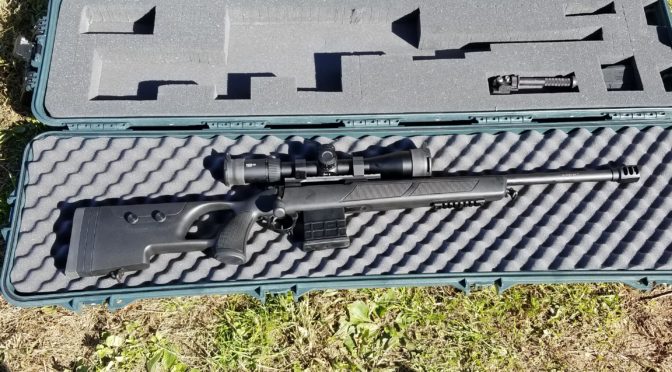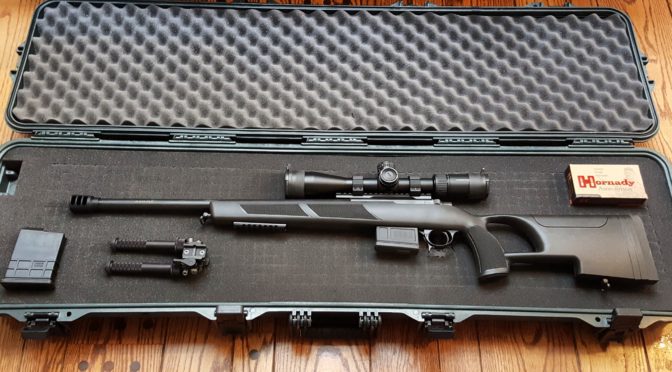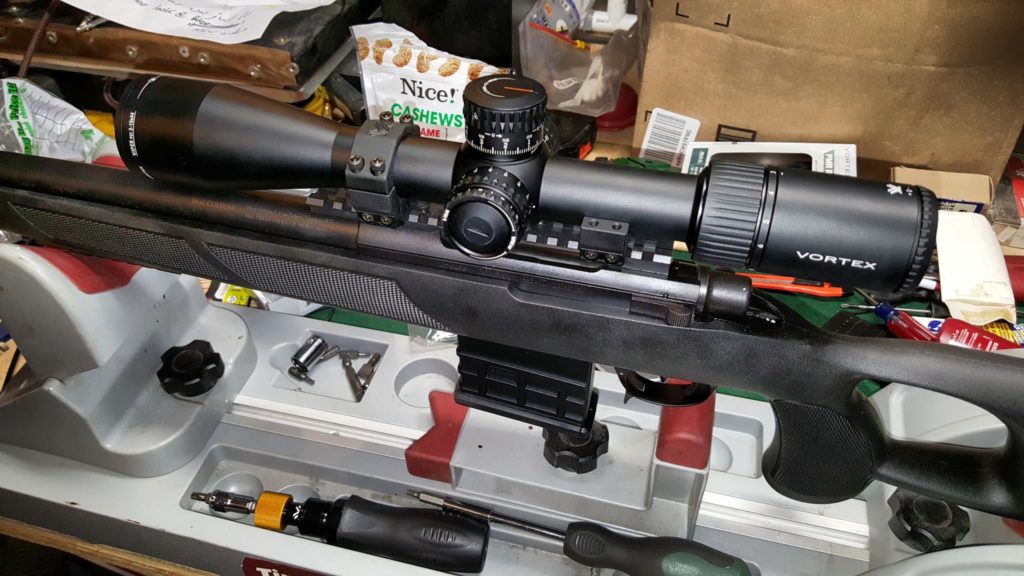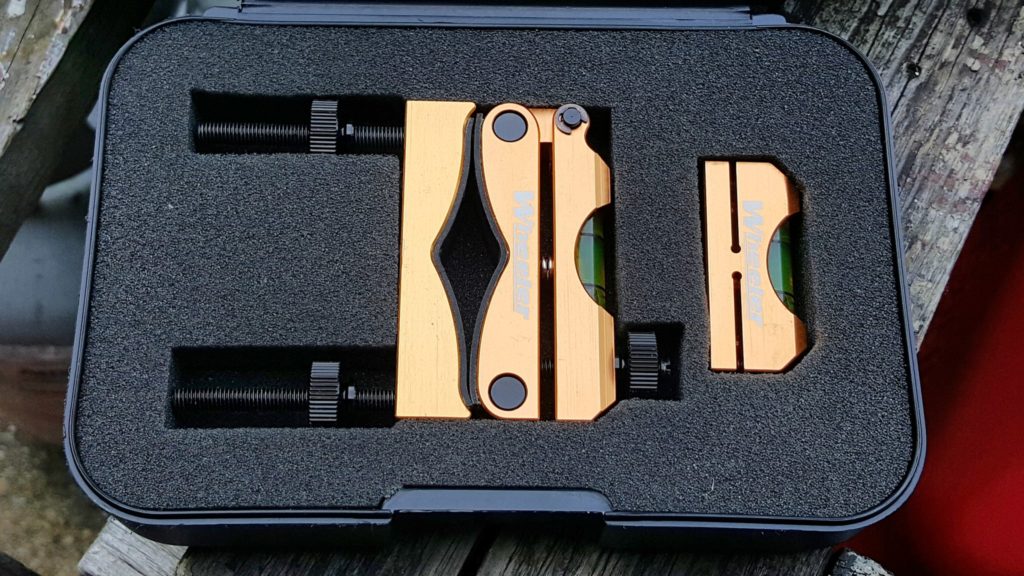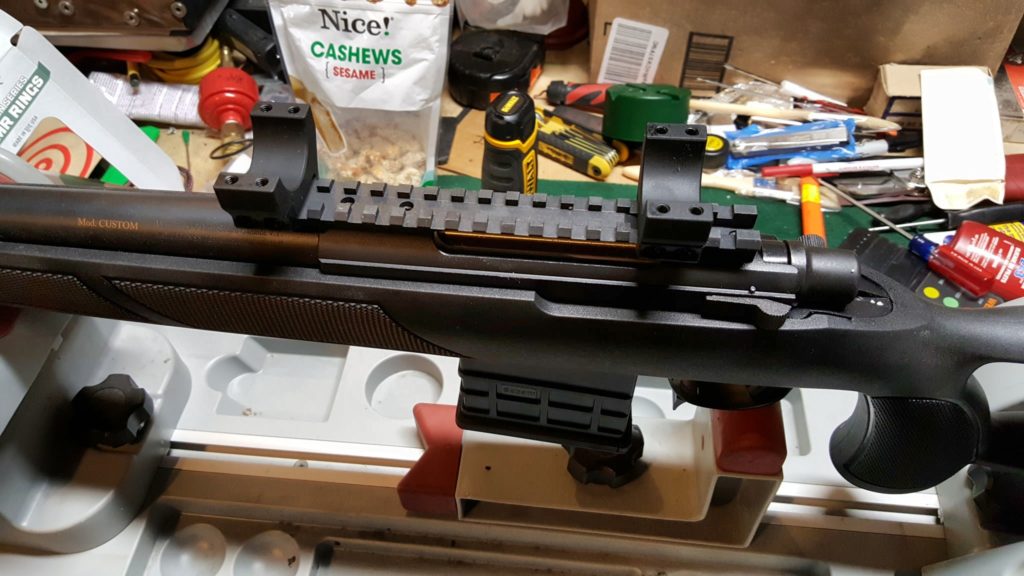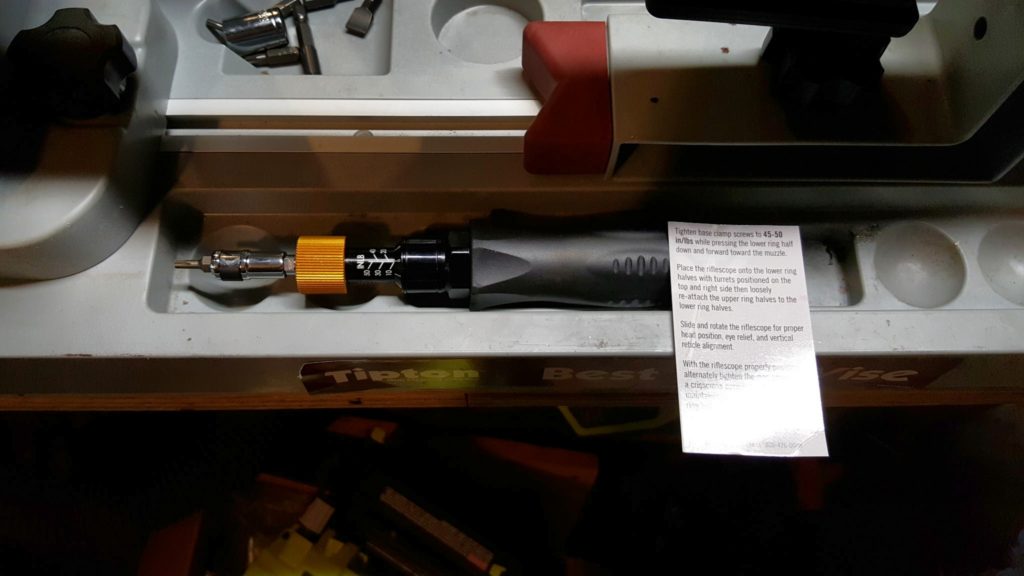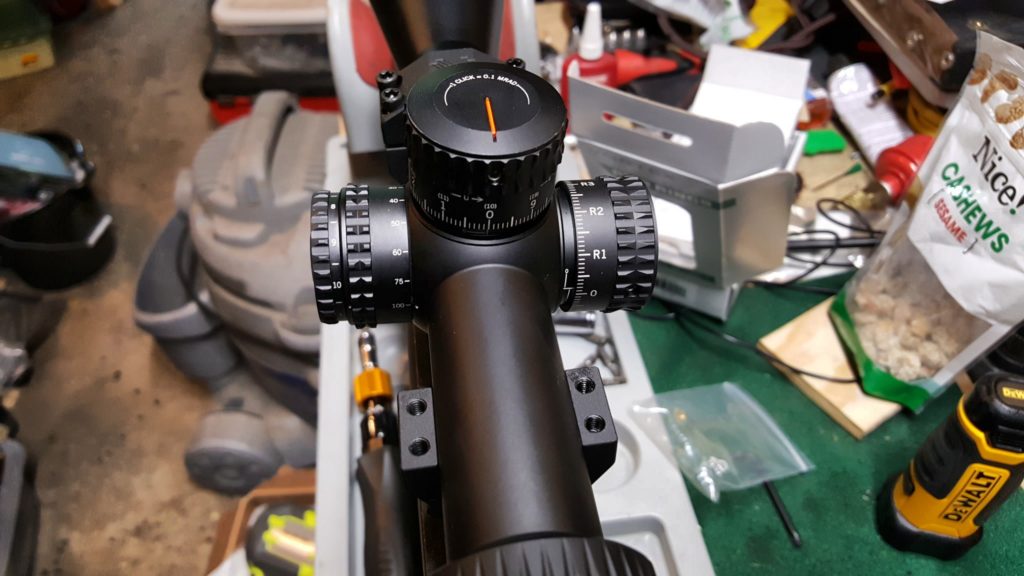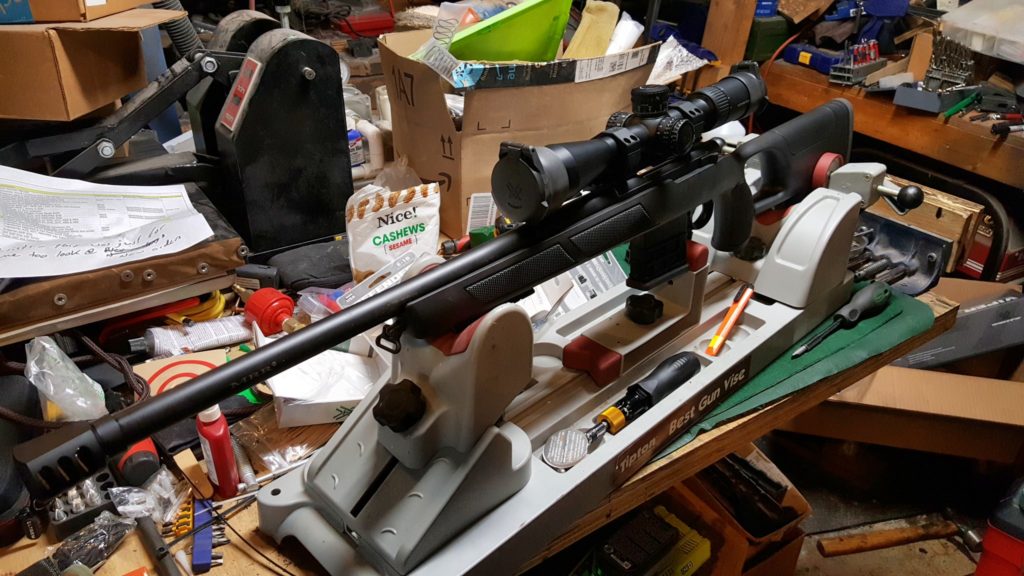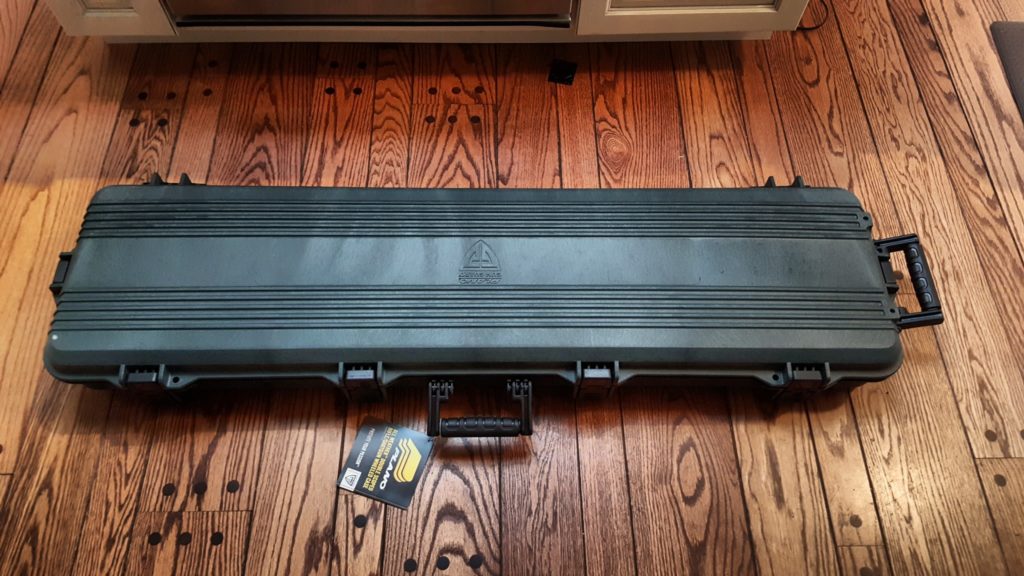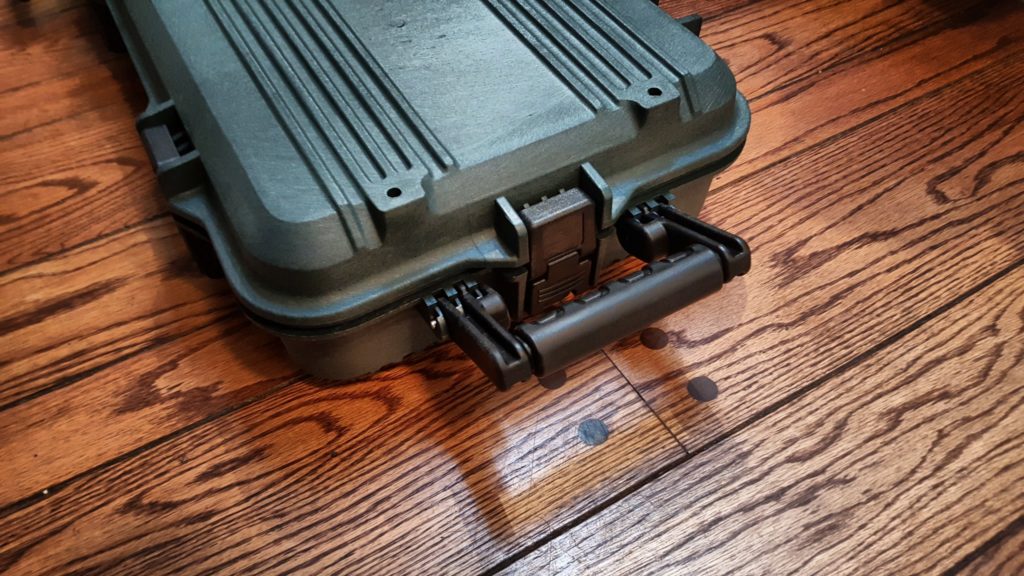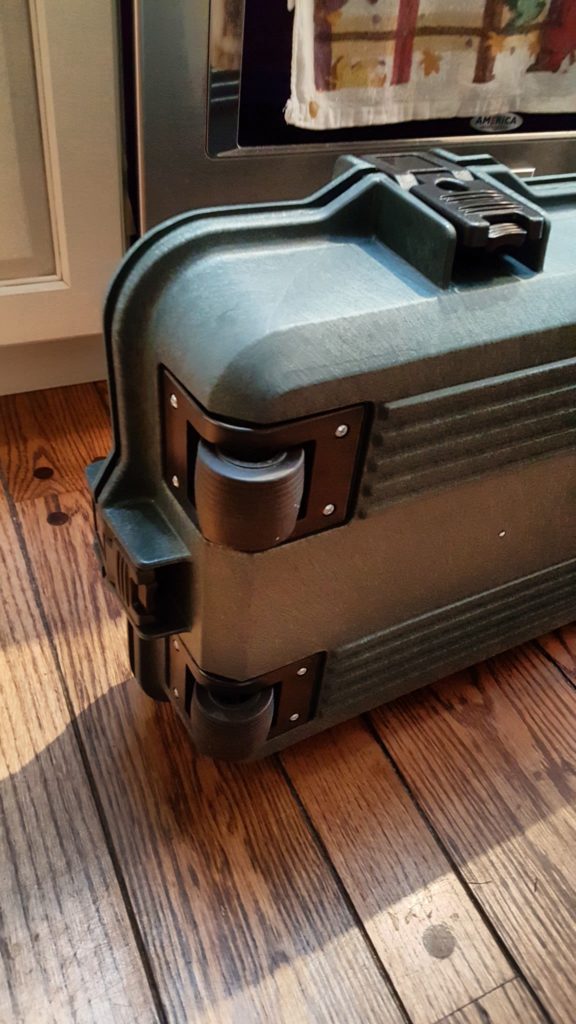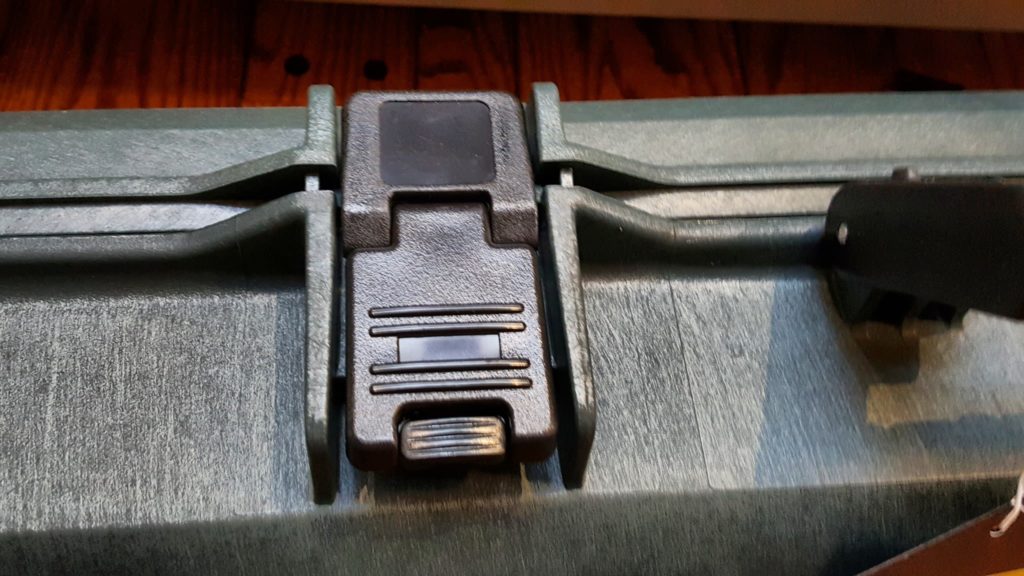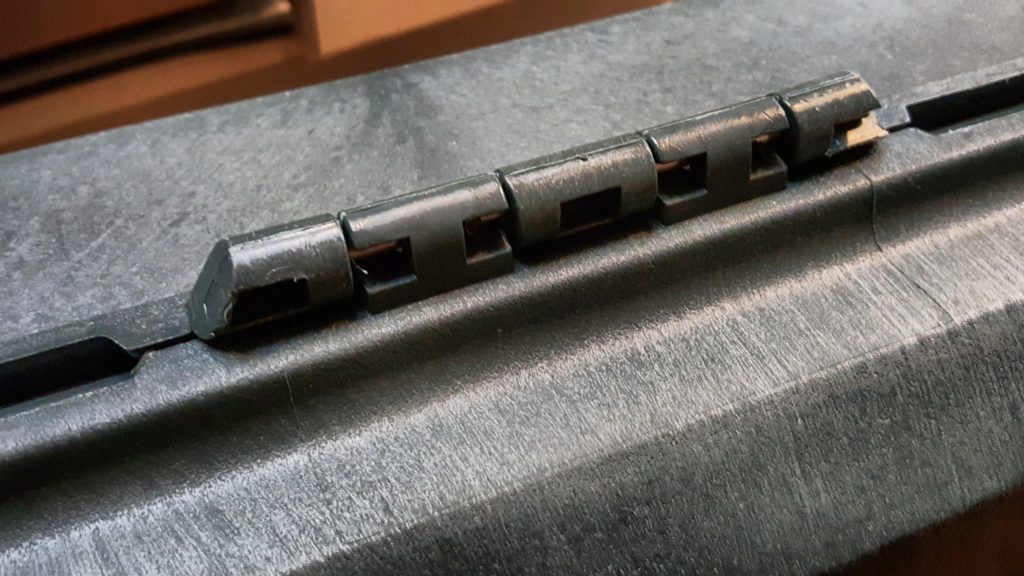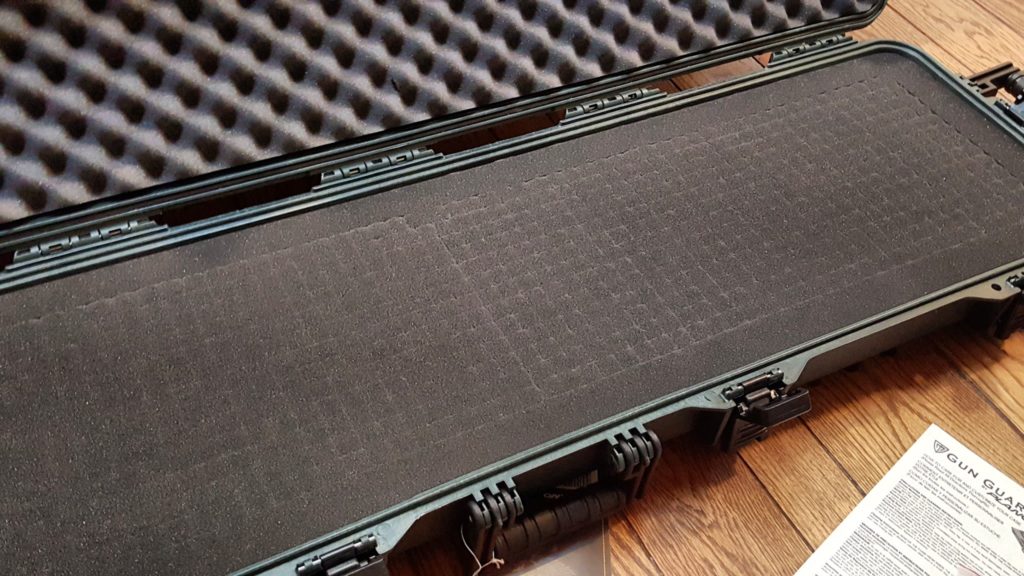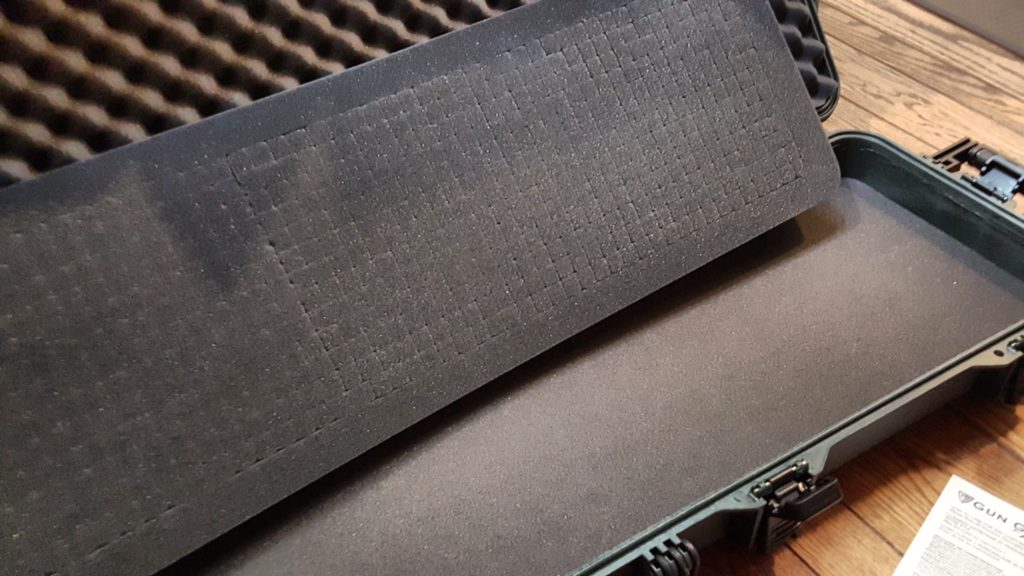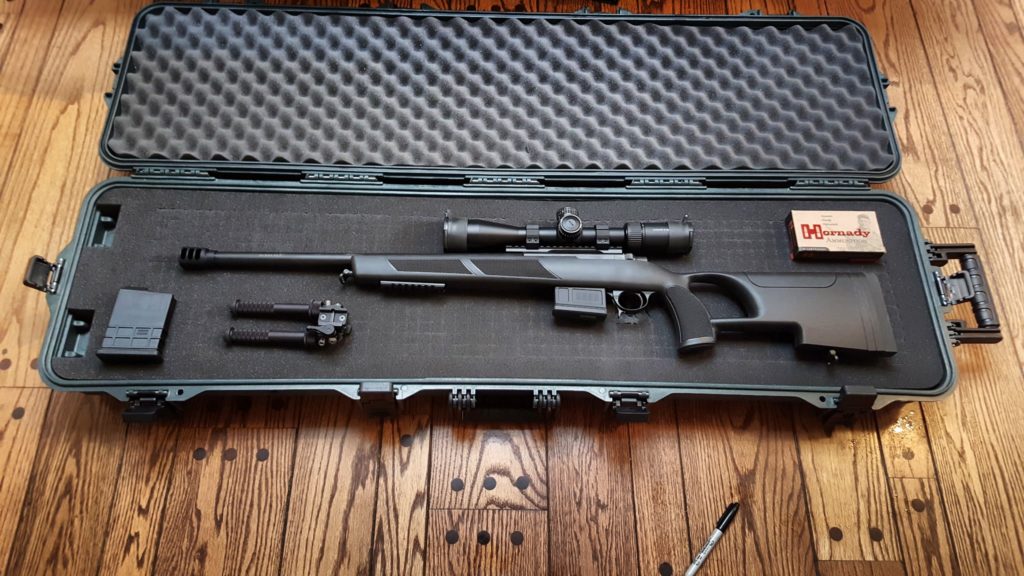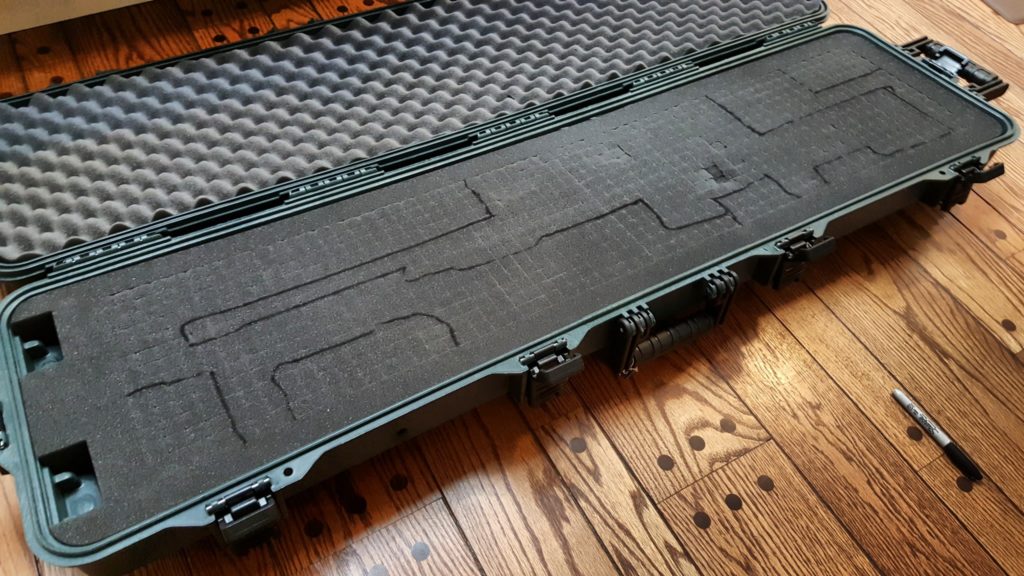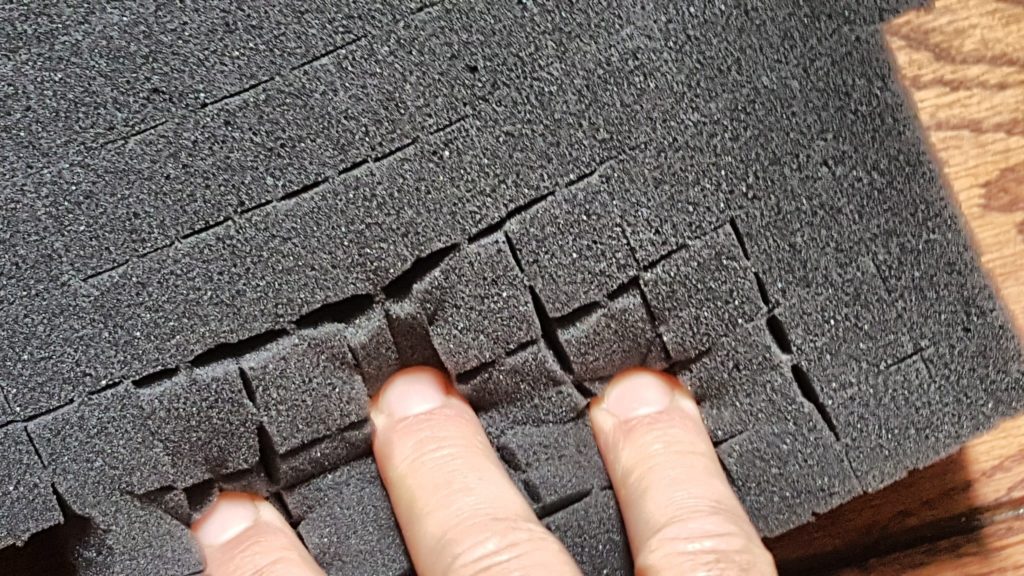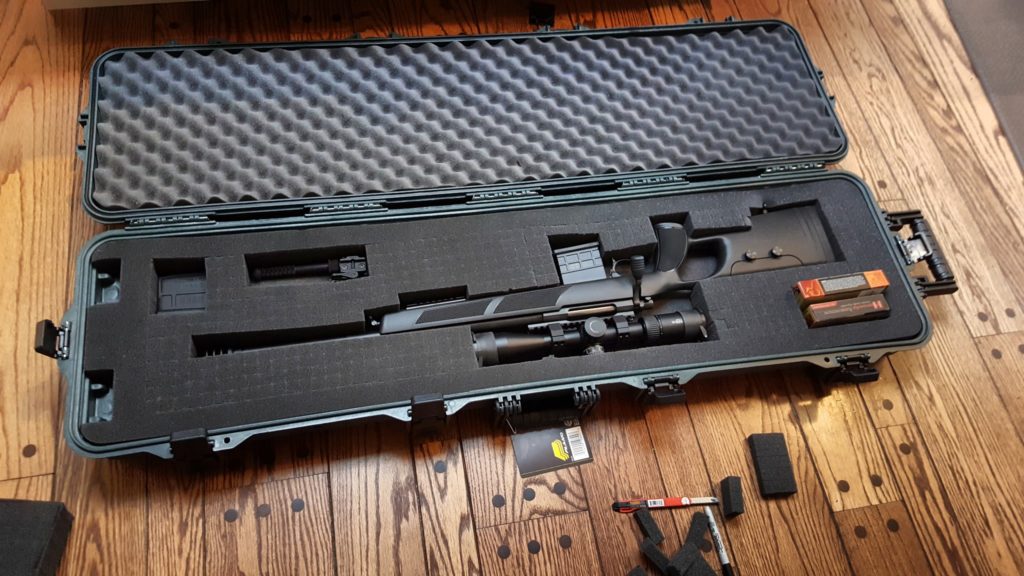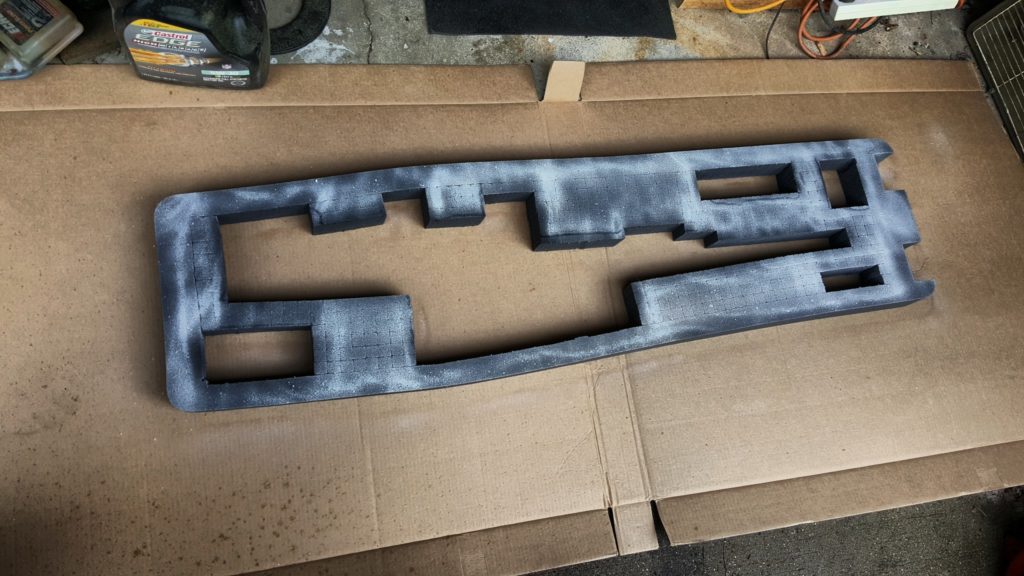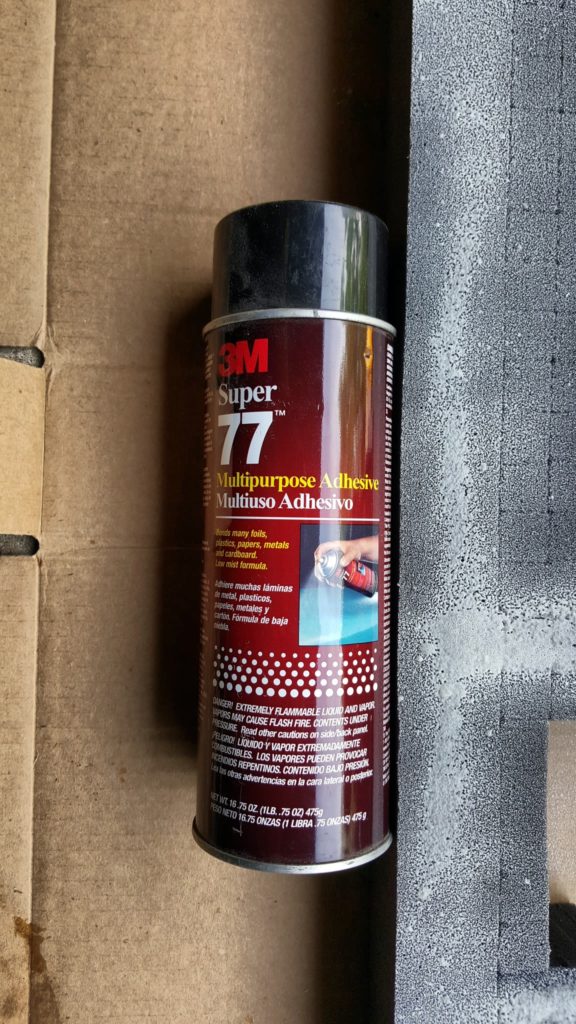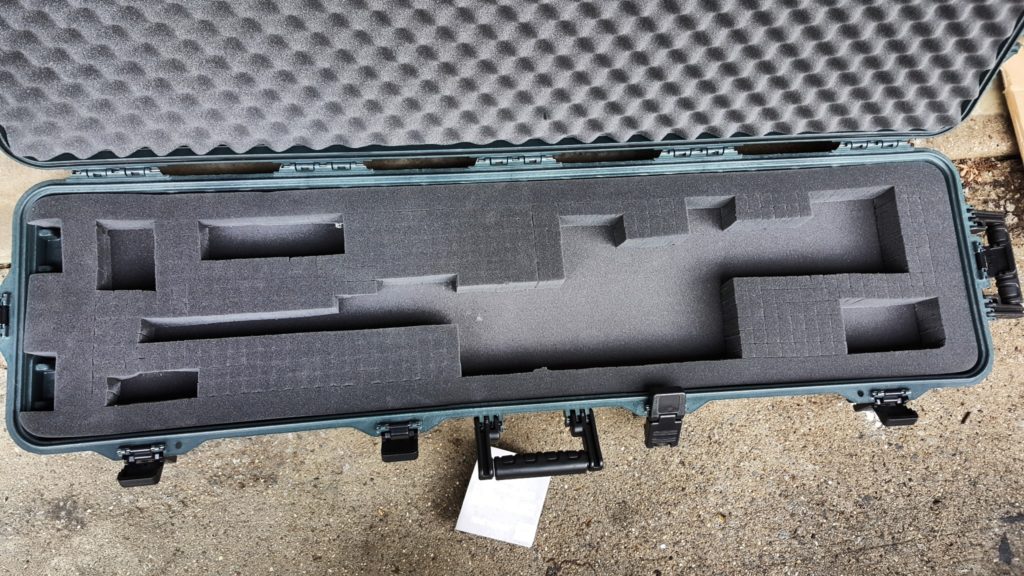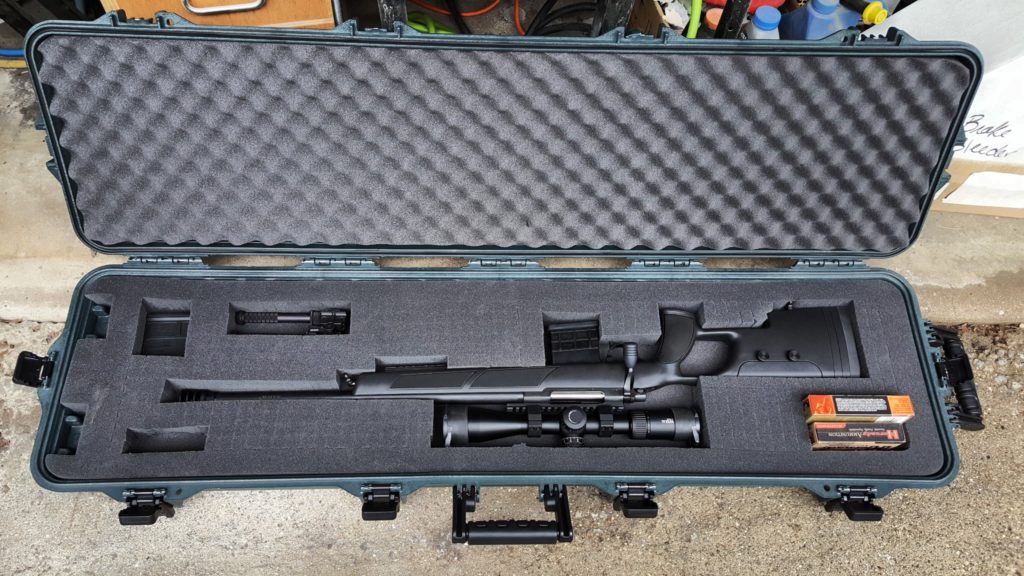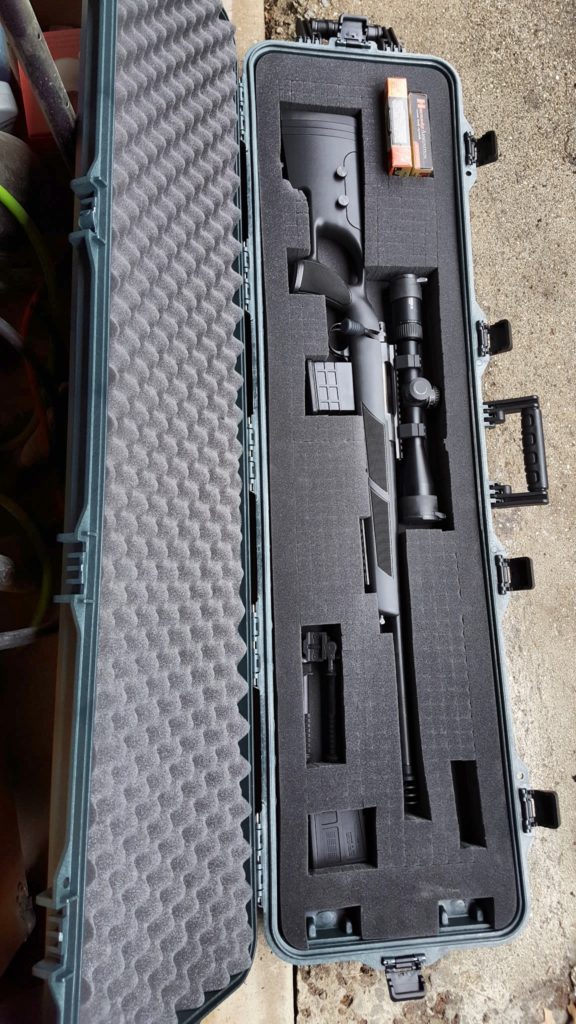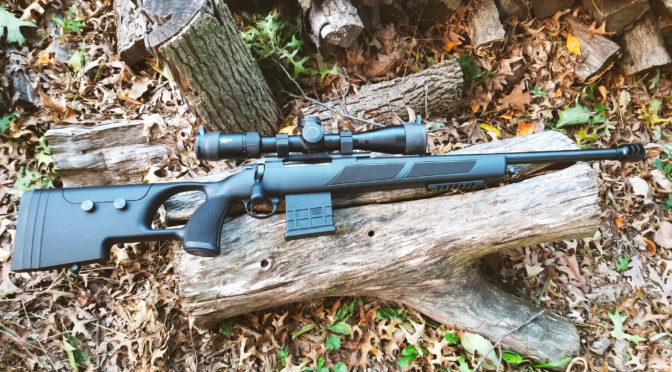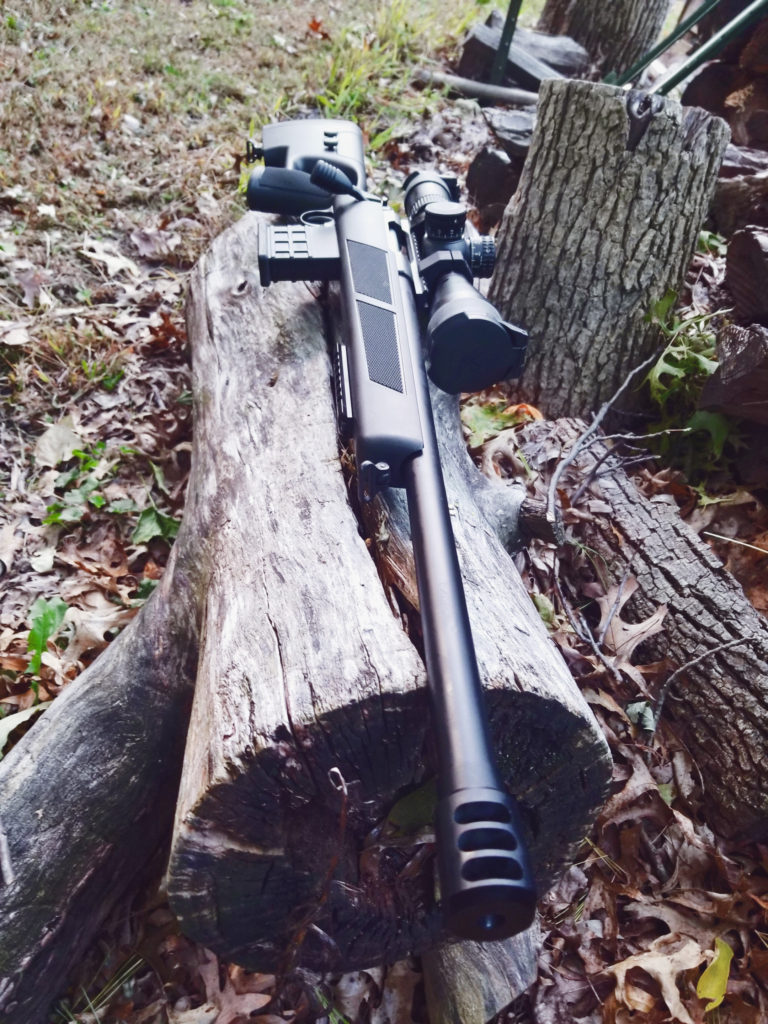In my last post, I discussed mounting the Vortex scope and tailoring a Plano hard case for my .308 Sabatti Urban Sniper. This last post in the series is about my trip to the range with it. I went to the range with high hopes – by all accounts it should sub minute of angle, meaning under one inch at a hundred yards. In short, it delivered.
I’d already shot a few rounds through the rifle at a quarry but couldn’t really shoot for accuracy. We put about 10 rounds through it. To shoot it from a bench, I took the Sabatti to the Berrien County Sportsman’s Club’s 100 yard rifle range and set up. I’d already cleaned it the night before to get ready and it was a fine Michigan fall day to do some shooting.
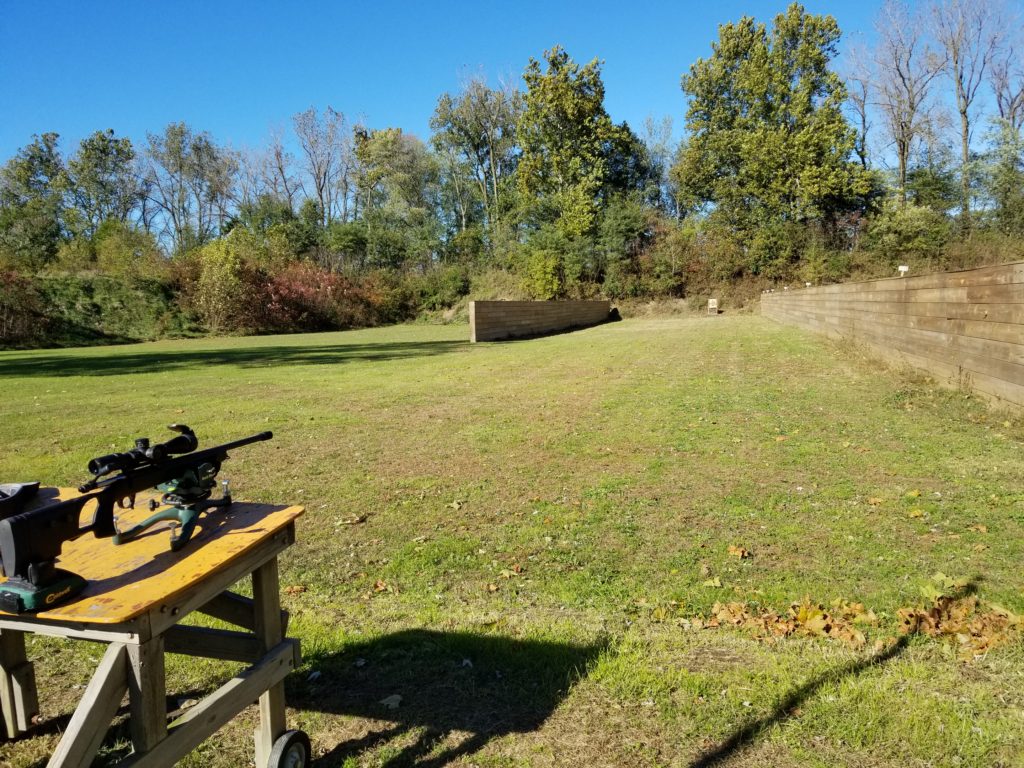
The rifle is being held by a Caldwell’s “The Rock” rest. I really like it. First off it is way heavier than my old Caldwell rest and second it is adjusts very smoothly as you are trying to dial the rifle in.
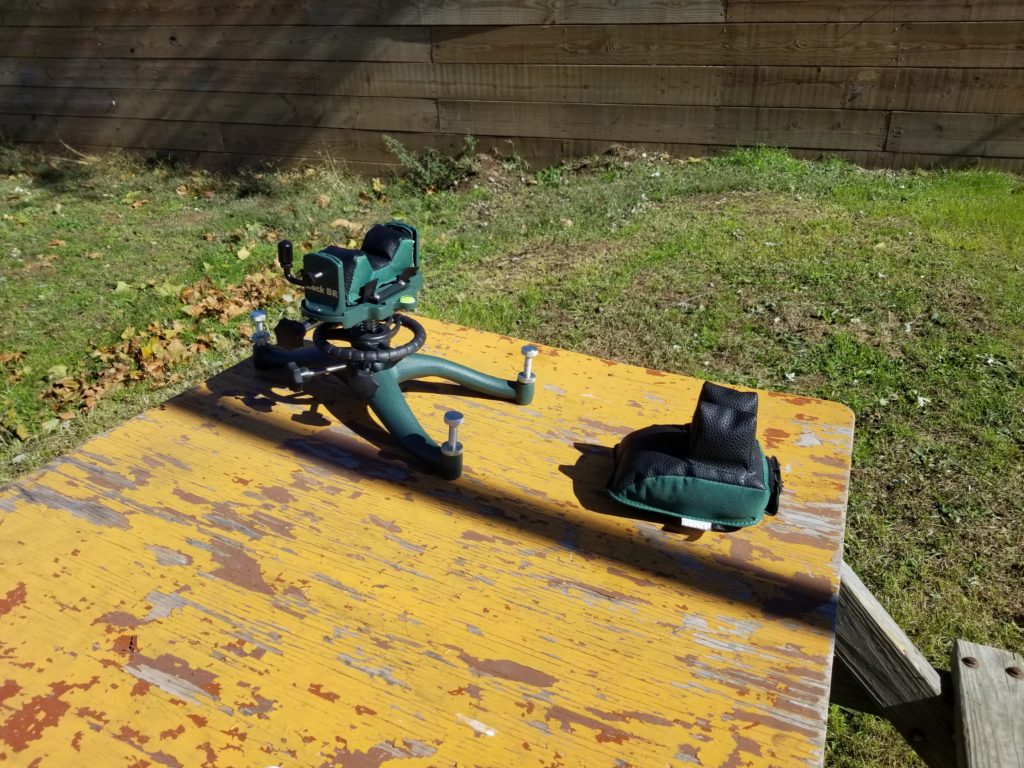
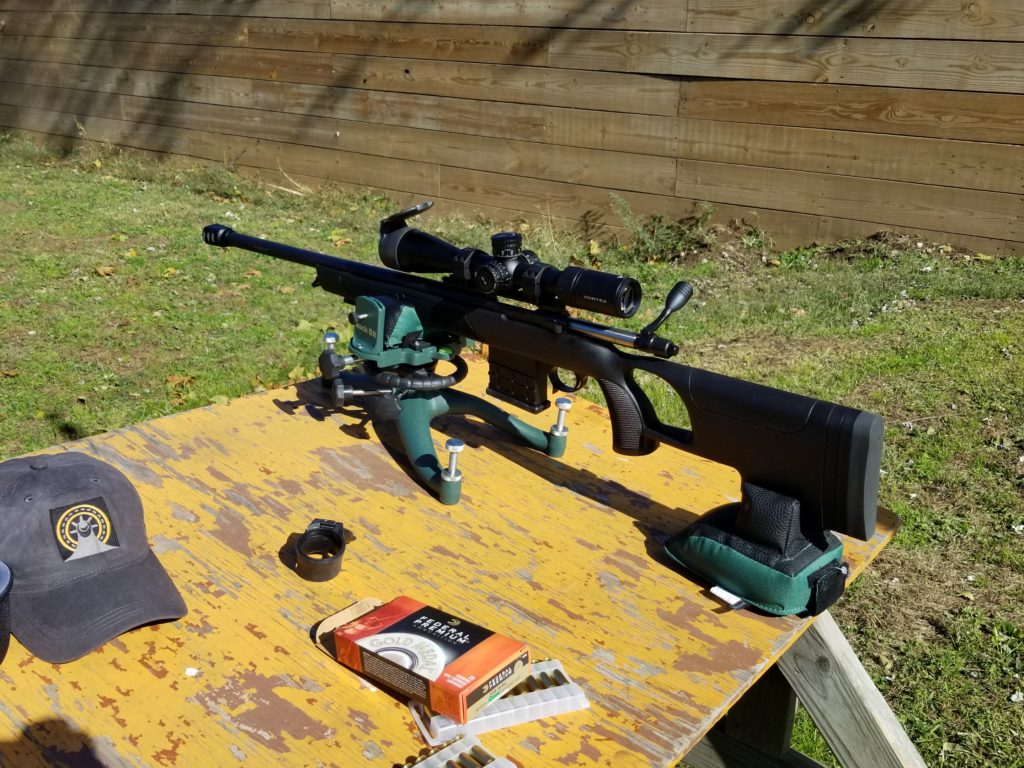
The buttstock is held by Caldwell’s Universal Rear Shooting Bag and I bought it filled. They have on that is unfilled if you prefer to use your own material and also determine how full to make it.
For hearing protection, I switched to Honeywell’s Howard Leight electronic earmuffs and absolutely love them. The reason is simple, my hearing is horrible – I sure wish I knew to protect my hearing when I was younger and am paying for it now. When I wear traditional earmuffs, I can’t hear anyone talk. With these, you can turn them on, set whatever amplification you want and they automatically turn off when you shoot.
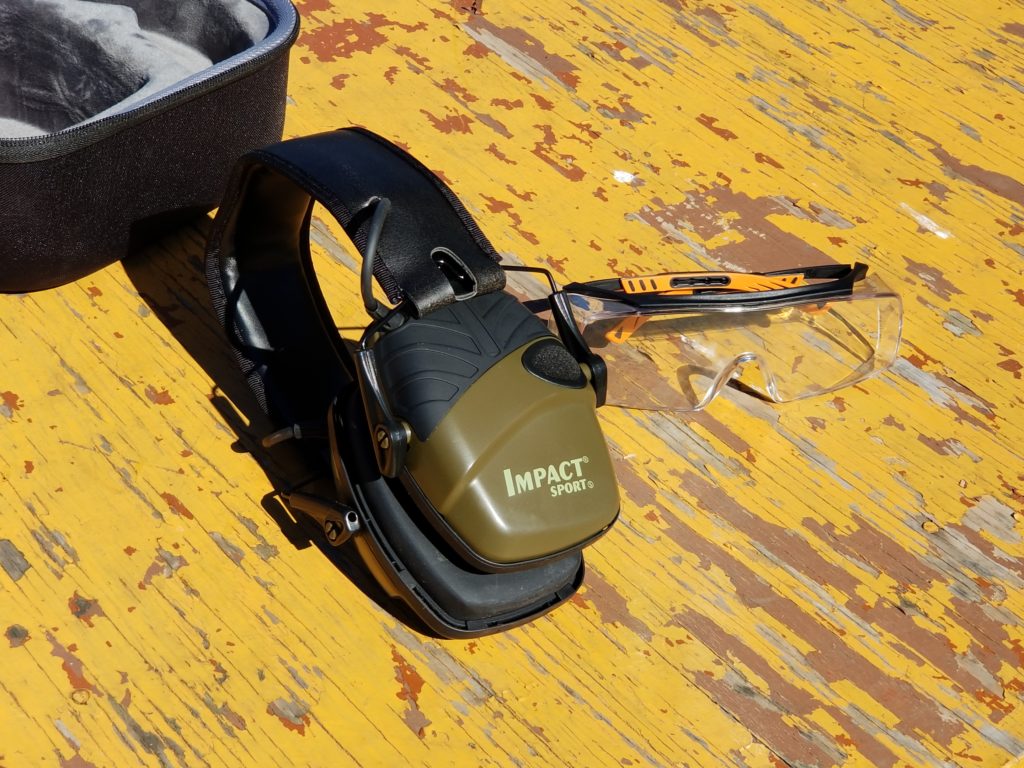
This means I can hear folks talk around me without needing to pull off the earmuffs. I have used these extensively this summer with 9mm, .40, 10mm, 5.56, .308 and .338 Lapua Magnum and use them exclusively now.
I bought a carry case to hold them and my shooting glasses that has worked out really well.
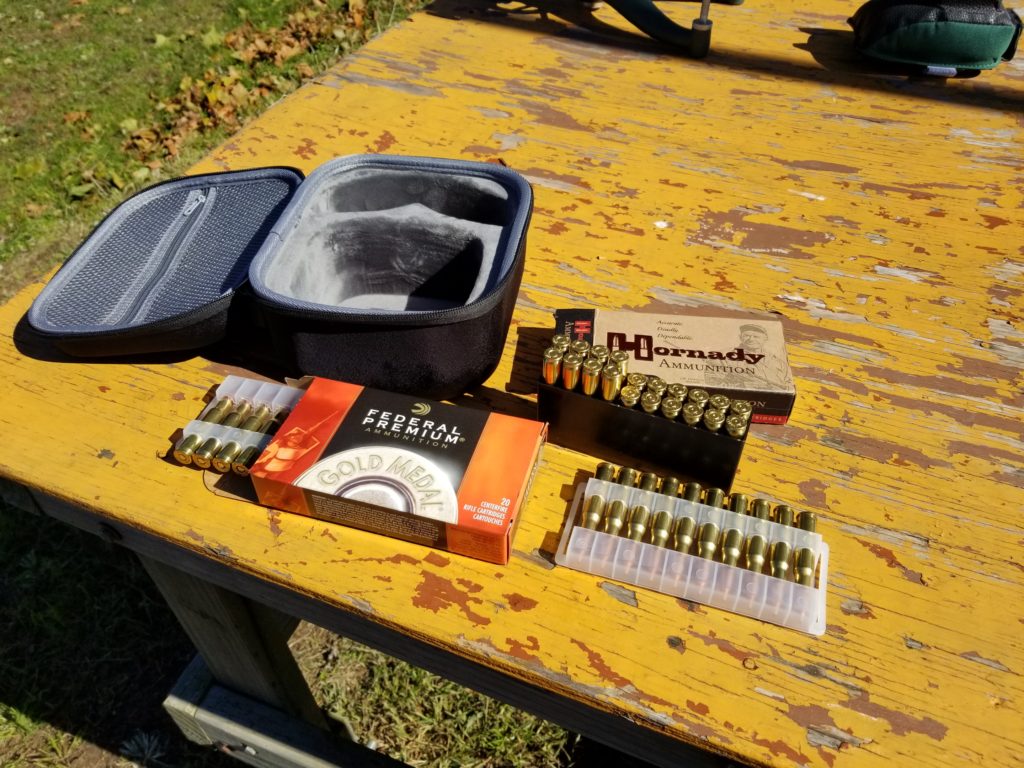
Note, because I wear prescription glasses, I wear No Cry brand “Over spec” safety glasses that fit over my glasses. They fit well and I store them in the above case also.
For targets, I started with a big 18×24 Splatterburst target as I dialed the scope in better and then I broke out some smaller Orange Peel targets with four circles per 8.5×11 page.
I did the sighting in with the balance of the Hornady ammo and then settled in to test with Federal 168 and 175 grain BTHP Match ammo as well as Remington 168 grain BTHP match ammo,
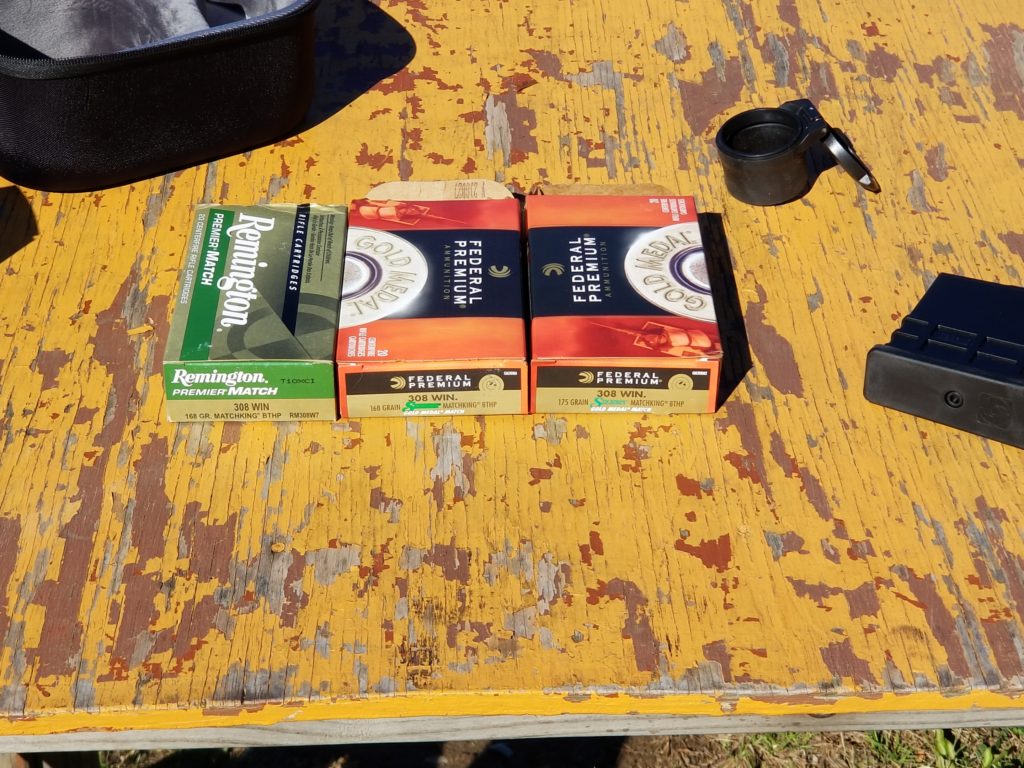
A problem popped up at this point that I did not expect, a slight wind had picked up and was causing the target holder to sway back and forth a bit. I’m sure it affected results a bit but it’s hard to say how much – I think the results are pretty darned good.
For each type of ammo, I would let the rifle cool down to ambient temperature and then fire two five round groups, let it cool and then the final two groups. Yes, I intentionally let it heat up and I did not clean the barrel at all during this range session – it was cleaned prior to the session.
Here are the results:
Federal 168 grain BTHP Match
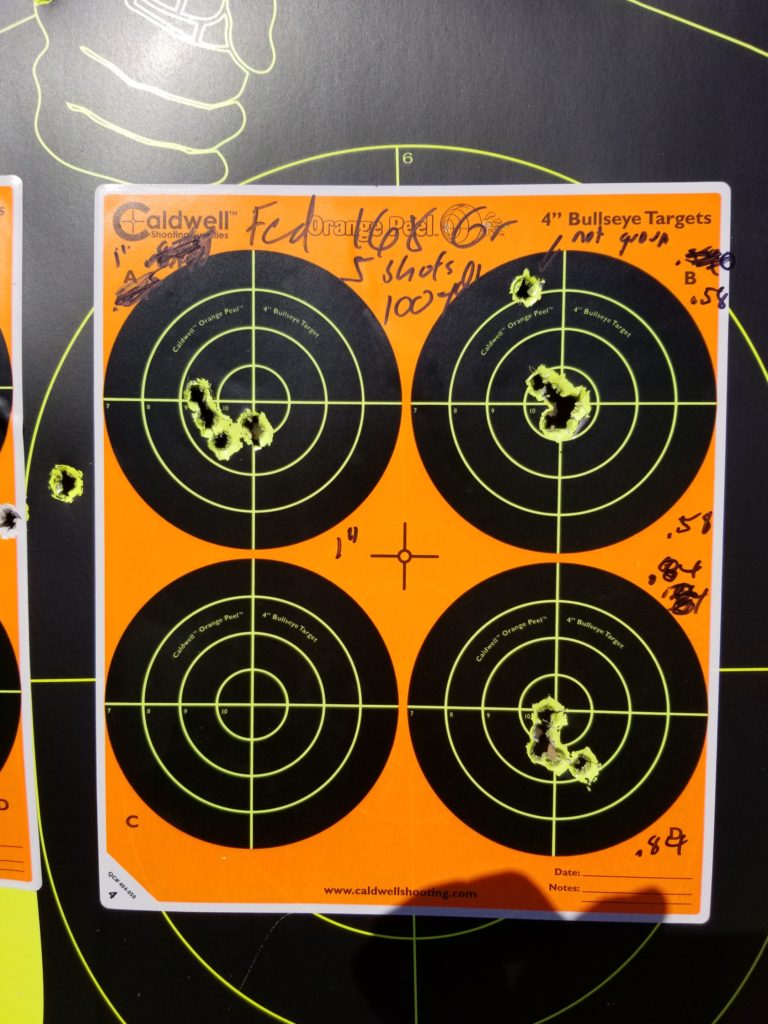
This is the only one where I only fired three groups. I ran out of Hornady ammo while sighting in, switched to Federal and then set up the targets once the rifle was ready to go.
The three groups are: 1″, 0.54″ and 0.84″. The odd bullet hole at the top right was from when I was setting up – it was not part of the five shot group. The average here is 0.793″ — that’s pretty good.
Federal 175gr BTHP Match
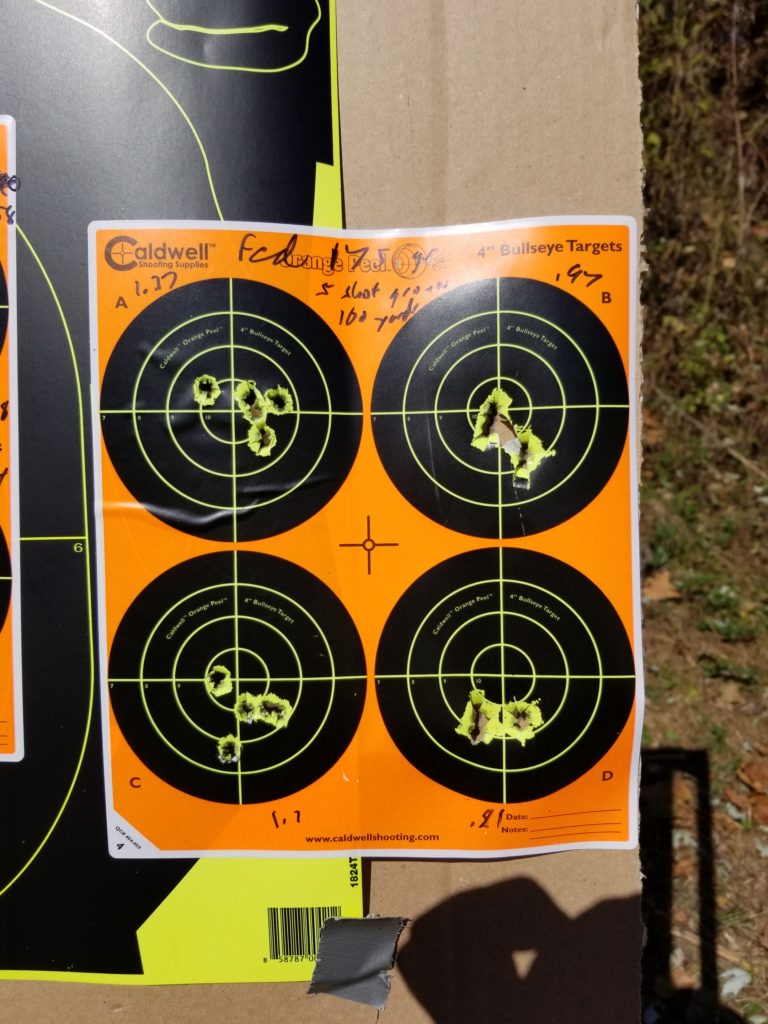
Here are four groups: 1.37″, 0.97″, 1.1″ an 0.81″. The average here is 1.06″. Both the A and C targets look like I had a flier as part of the group. In other words, I bet it was me making a mistake vs. the rifle or the ammo.
Remington 168gr BHTP Match
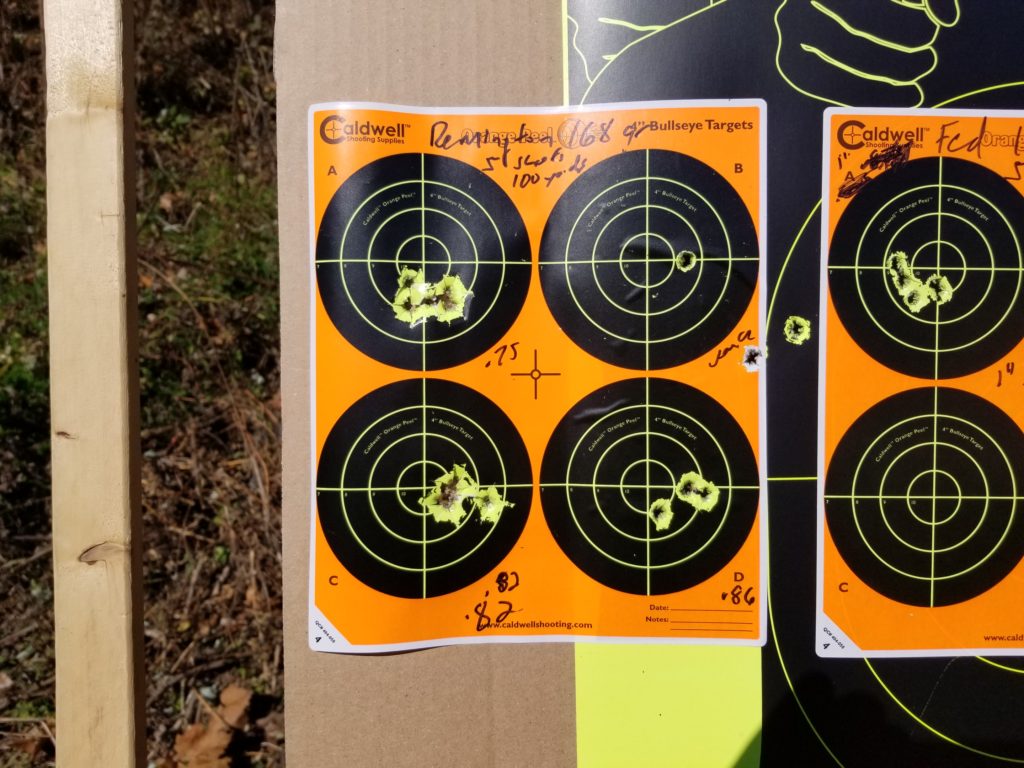
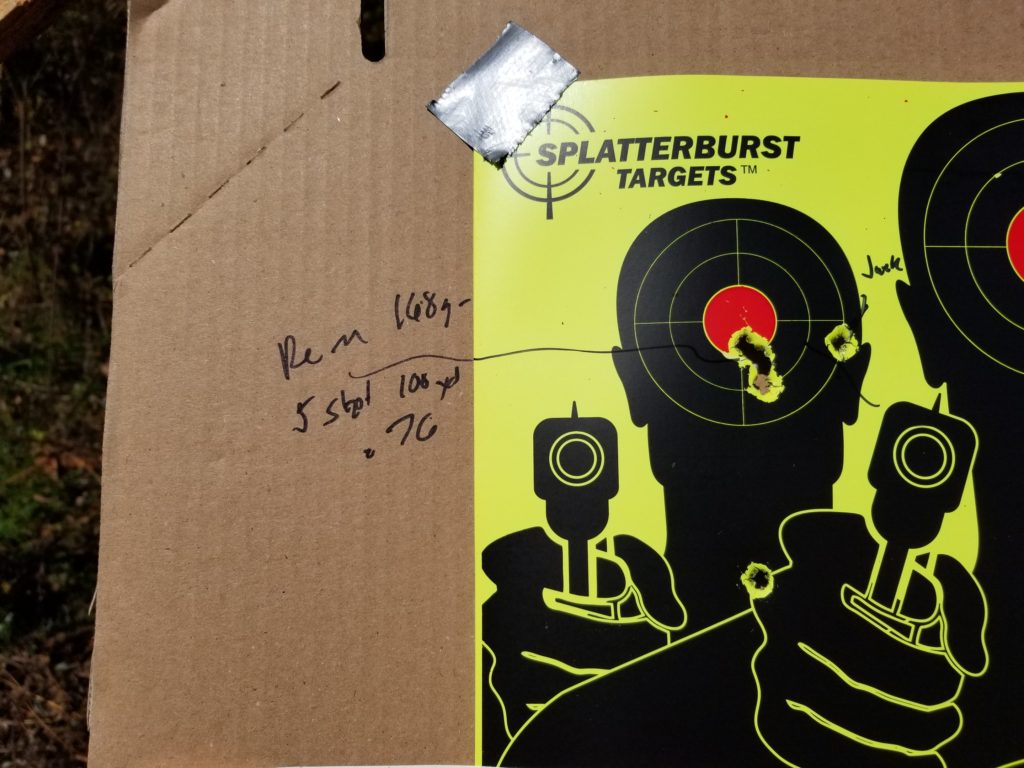
The Remington ammo was shot on two targets because I had an oddball hole from when I was setting up. — The groups are: 0.75″, 0.82″, 0.82″ and 0.76″. The average was 0.79″ — the winner for smallest group.
I asked Justin Todd, with Italian Firearms Groups (IFG) what he heard about accuracy. He said my results are very typical and he knows handloaders who are getting 0.15-0.25″ groups.
Tell you what, I really liked the rifle. It had mild recoil due to the effective brake. The trigger was really nice at 3-1/8″ pounds and the bolt cycles easily. I did not have any problems with reliability and the accuracy sure is there.
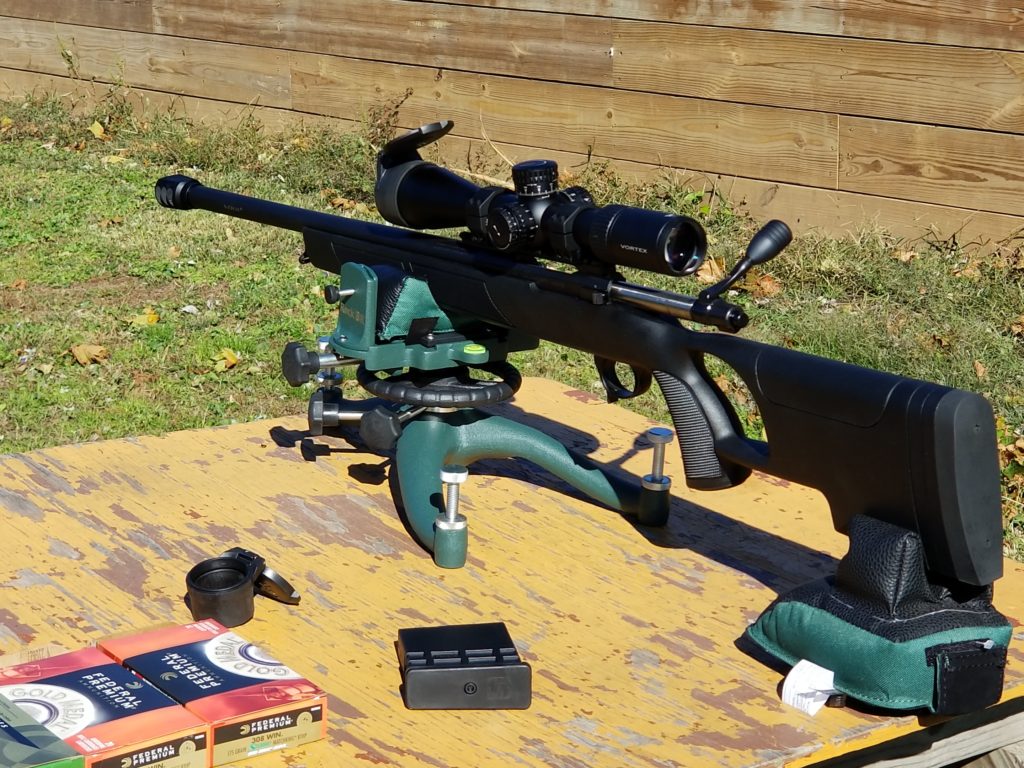
If you are looking for a solid tactical rifle to engage targets within 400 meters, I really think you ought to give the Sabatti Urban Sniper a serious look and consider pairing it with a good scope like I did with the Vortex PST.
If you find this post useful, please share the link on Facebook, with your friends, etc. Your support is much appreciated and if you have any feedback, please email me at in**@*********ps.com. Please note that for links to other websites, we are only paid if there is an affiliate program such as Avantlink, Impact, Amazon and eBay and only if you purchase something. If you’d like to directly contribute towards our continued reporting, please visit our funding page.
